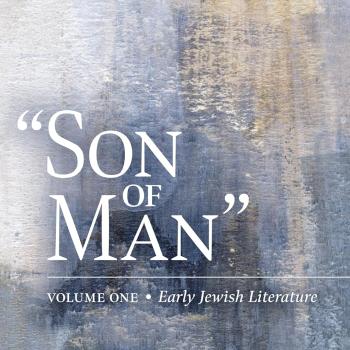In this article we will consider only John 1.1c. (Click here to see the post about John 20.28.) This brief third clause in John 1.1 has caused Christians to believe Jesus is God more than any other Bible text. But that is because the traditional translation of it is about the only one known and most Bible readers don’t know biblical Greek, so they don’t know about the important grammatical issues that enable other translations.
The Gospel of John begins with a prologue consisting of eighteen verses. It serves as an outline for this gospel. So, many of the prologue’s clauses link to portions in the text.
Most modern English Bible versions translate John 1.1 as it appears in the King James Version (KJV). It reads, “In the beginning was the Word, and the Word was with God, and the Word was God.” The first problem that surfaces from this reading is that “the Word” being with God appears incongruous with “the Word” actually being God.
Traditionalists (those who believe Jesus is God) assert that this prologue calls Jesus “God” by comparing John 1.1c with v. 14, which reads, “And the Word became flesh and lived among us,” referring to the man Jesus Christ. So, traditionalists reason as follows: (1) the Word was God, (2) the Word became Jesus Christ, (3) so Jesus Christ is God. But the third clause in the first sentence of John 1.1 in the Greek text contains complex grammatical issues that affect how it should be translated and therefore what it means.
First, the Greek text of John 1.1c reads kai theos en ho logos. This literally translates, “and god was the word.” It is because the Greek word theos (god) appears before the word logos (word). Because of this word order, and prior to the KJV, translated in 1611, several prior, important translators—including Wycliffe, Coverdale, Bishop, and Luther—translated John 1.1c, “and God was the w/Word(e).” (Incidentally, during the early centuries of Christianity, the Greek language had only uncials (capital letters), with no upper and lower case as we have. So, capitalization in English Bibles is interpretation.)
But the main grammatical problem in John 1.1c is that theos is anarthrous (without the article; Gr. ho = Eng. “the”) whereas theos is articular (ton theon, with the article) in the previous clause, that is, John 1.1b. A noun with an article usually makes it definite, such as “the god/God,” whereas an anarthrous noun usually makes it indefinite, such as “a god.” That is why the Jehovah Witnesses insist that John 1.1c be translated, “and the Word was a god.”
Due to this grammatical difficulty in John 1.1c, a few distinguished Greek scholars treat its anarthrous theos as qualitative. They usually render the phrase adjectively as follows: “and the Word was divine.” But this translation seems unwarranted since, if the author had wished to so describe the logos, he likely would have used the Greek word for divine, which is theios. Thus, it does not appear that “divine” is a suitable translation in John 1.1c.
In the twentieth century, a sharp debate arose among NT scholars about anarthrous nouns in the Greek NT, especially in John 1.1c. This debate centered on two journal articles that were published in the most prestigious theological journal in the world–the Journal of Biblical Literature (JBL)–but a generation apart.
This debate first arose in a 1933 JBL article written by Professor Ernest C. Colwell of the University of Chicago wherein he tried to establish a new Greek rule of grammar. He claimed that “a definite predicate nominative has the article when it follows the verb; it does not have the article when it precedes the verb.” In saying this, he was attempting to support the traditional translation of John 1.1c. Traditionalists ever since have cited his proposition, calling it the “Colwell Rule.” Yet Colwell himself admitted that the exception to his rule was that the context could demand otherwise.
In a 1973 JBL article, Philip B. Harner wrote, “Colwell was almost entirely concerned with the question whether anarthrous predicate nouns were definite or indefinite, and he did not discuss at any length the problem of their qualitative significance.” Harner shows in this article that when an anarthrous predicate noun precedes the verb, as in John 1.1c, it has a distinctly qualitative force that is more prominent than either its definiteness or indefiniteness. Harner therefore concludes, “In John 1.1 I think that the qualitative force of the predicate is so prominent that the noun cannot be regarded as definite.” Thus, he renders theos in John 1.1c as qualitative.
So, according to Harner’s analysis the traditional translation of John 1.1c (“and the Word was God”) is incorrect. To date, despite Greek grammarian Daniel B. Wallace’s objections, Harner’s determinations have not been thwarted by scholars in general. Rather, an increasing number of scholars have endorsed his compelling argument and consequently have abandoned the traditional translation of John 1.1c.
Harner ends his article by endorsing the New English Bible (NEB) translation of John 1.1c. It reads, “and what God was, the Word was.” This means the Word, which later became Jesus of Nazareth according to v. 14, was exactly like God without being God. This translation treats the anarthrous theos as adjectival, thus qualitative, without translating it “divine.” This rendering corresponds well with the last clause in Hebrews 1.3. It reads, “He [Jesus] is the radiance of His [God’s] glory and the exact representation of His [God’s] nature.”
Finally, this NEB translation of John 1.1c—“and what God was, the Word was”—links to the following sayings of Jesus in the Gospel of John:
- “the Father is in Me, and I in the Father” (John 10.38, cf. 30).
- “And he who beholds Me beholds the One who sent Me” (John 12.45).
- “He who has seen Me has seen the Father” (John 14.9).
- “I am in the Father, and the Father is in Me” (2x in John 14.10-11; cf. v. 20).
- “Thomas answered and said to Him, ‘My Lord and my God’” (John 20.28).
Finally, Jesus’ words in John 14.9, “He who has seen Me has seen the Father,” explain John 1.1c best of all.
What do some leading New Testament scholars say about this? Marinus de Jonge explains, “The author of this Prologue clearly wants to identify ‘the Word’ and God as closely as possible without infringing the belief in the One God.” And William Barclay characteristically sums it up so well, “When John said the word was God he was not saying that Jesus was identical with God; he was saying that Jesus was so perfectly the same as God in mind, in heart, in being that in him we perfectly see what God is like.”
In my book, The Restitution of Jesus Christ (2008), I devote twelve pages to an full examination of John 1.1c. In doing so, I cite twenty-six distinguished Bible scholars and their works.
* All scripture quotations are from the New Revised Standard Version (NRSV) of the Bible unless otherwise indicated.
…………….
To see a list of titles of 130+ posts (2-3 pages) that are about Jesus not being God in the Bible, with a few about God not being a Trinity, at Kermit Zarley Blog click “Chistology” in the header bar. Most are condensations of my book, The Restitution of Jesus Christ. See my website servetustheevangelical.com, which is all about this book, with reviews, etc. Learn about my books and purchase them at kermitzarley.com. I was a Trinitarian for 22 years before reading myself out of it in the Bible.












